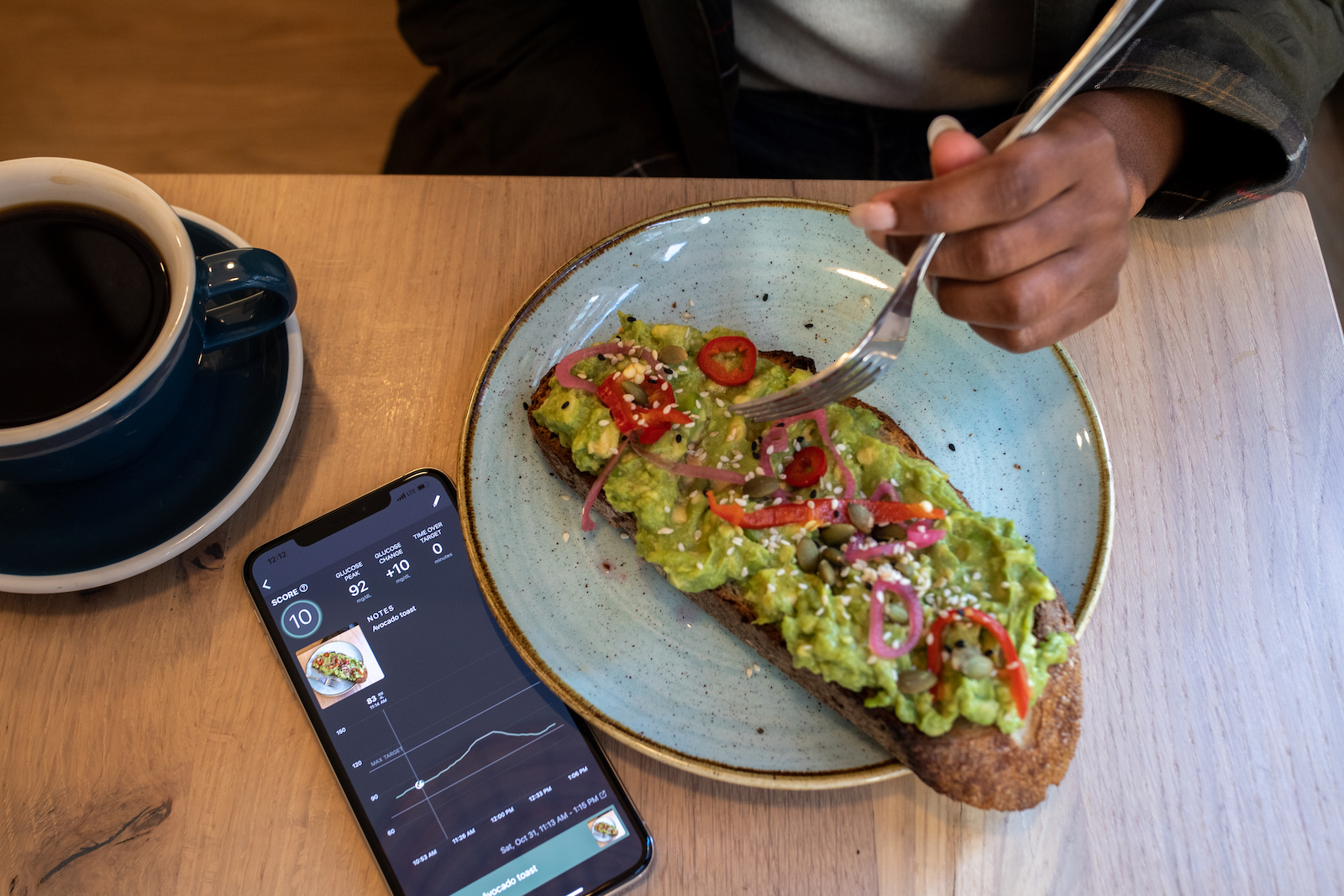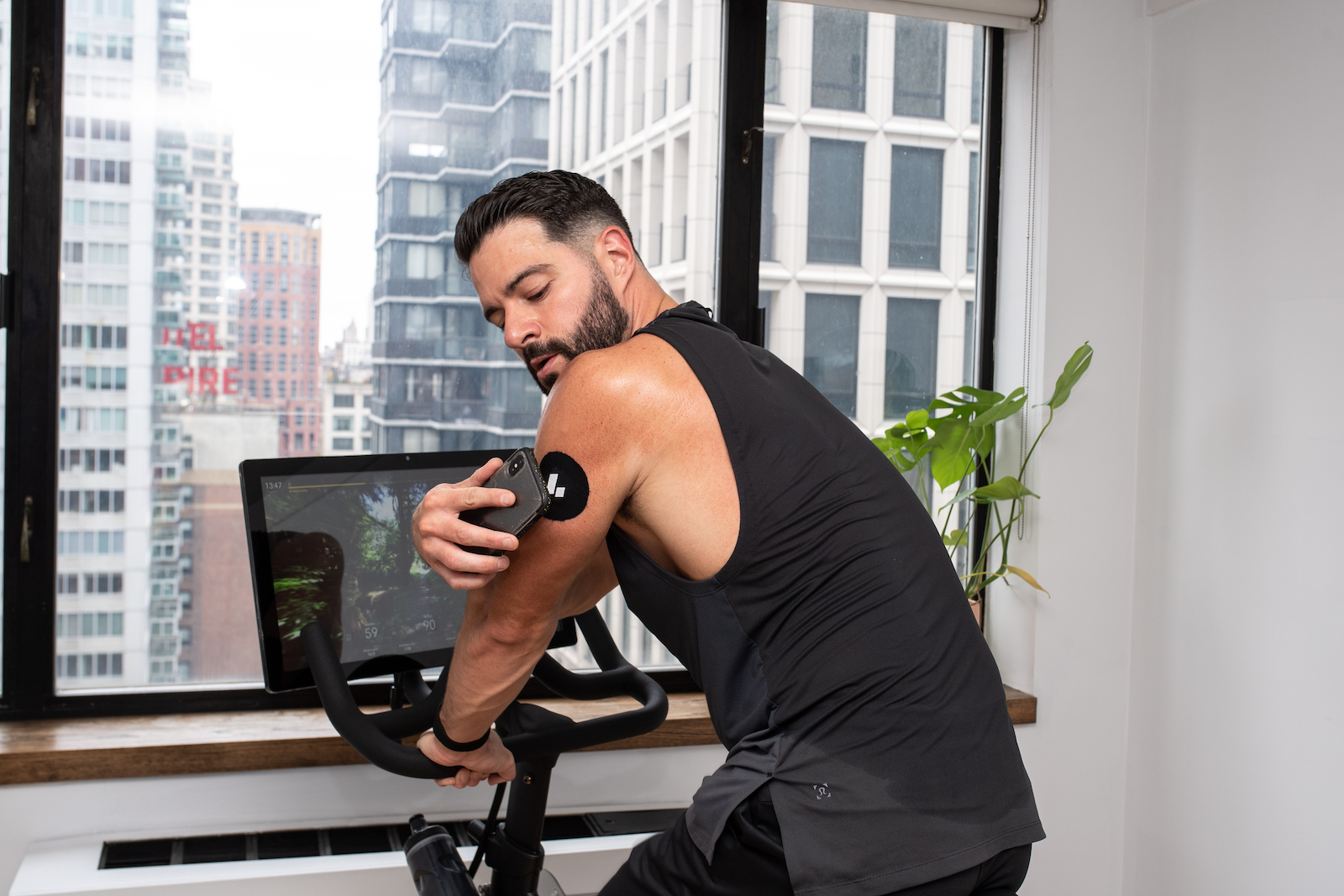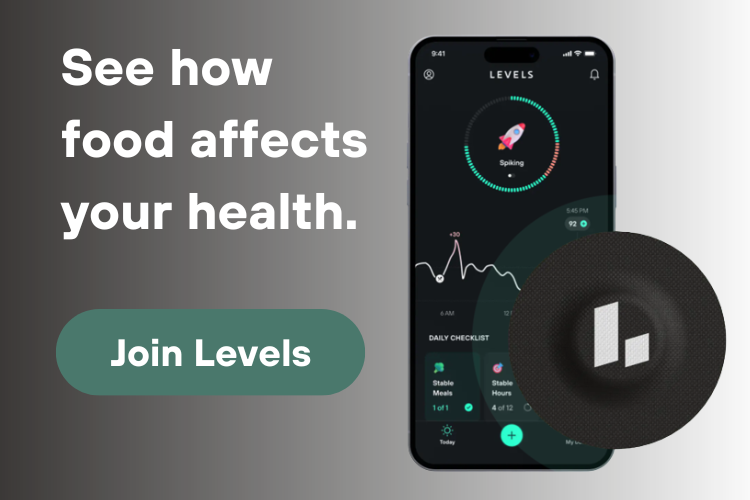Blood-Sugar Basics
Why should people without diabetes monitor glucose levels?
Only 7% of the U.S. population is considered metabolically healthy. Today, more than 120 million Americans have prediabetes or diabetes, and 84% of people with prediabetes don’t even know they have it. What’s more, 9 of the 10 leading causes of death in the U.S. are strongly related to metabolic dysfunction or are exacerbated by poor glucose control. In short, too much glucose and insulin can have serious consequences for anyone.
Fortunately, the beauty of striving for better metabolic health is that much of it is in our control.
Maintaining stable glucose ranges can improve energy, endurance, memory, mood, and cognitive performance. Levels’ goal is to help you improve metabolic fitness by alerting you to foods and lifestyle choices that negatively impact glucose levels, so you can make healthier, more informed decisions.
Related articles:
Can’t I just look at a glycemic index to see how foods will affect me?
Glycemic index (GI) indicates how quickly your body processes the carbohydrates in a particular food, and can be a useful guide to what might cause a glucose spike. For example, potatoes have a high GI, so they can cause a spike even without added sugar.
But how we each respond to food goes beyond the macronutrient composition of the food itself. You might respond well to bananas and have a big spike when you eat rice, while someone else may have the opposite response. Individual differences, such as the composition of our gut microbiome, how well we sleep, exposure to stress, physical activity, and our genetics can all contribute to those unique reactions. The more you know about how your body responds, the easier it becomes to make healthy choices.
Why does Levels measure glucose and not insulin?
Insulin is a hormone released by the pancreas that allows glucose to move from our blood into our cells, where it can be stored or converted to energy. When glucose is too high too frequently, we produce too much insulin. Over time, that can lead to insulin resistance, a condition associated with serious chronic disorders including heart disease, cancer, stroke, dementia, and infertility.
However, insulin cannot be tested continuously at home. Continuous glucose monitors (CGM) makes glucose simple to measure yourself, and since the body releases insulin in response to glucose elevation in the blood, CGMs can help coach people to eat for fewer glucose spikes and therefore minimize excess insulin.
Related article:
What is a healthy range for glucose levels?
The International Diabetes Federation recommends that for people without diabetes, glucose levels should remain below 140mg/dL after meals and return to pre-meal levels within 2–3 hours. However, there are no standardized, universally accepted criteria for what “normal” or “optimal” 24-hour glucose values are for non-diabetic people wearing CGMs.
Levels recommends maintaining glucose levels between 72–110 mg/dL, limiting post-meal glucose rises to no more than 30 mg/dL from pre-meal levels, and maintaining an average glucose of 100 mg/dL or lower. We based these guidelines on observed blood-glucose levels in several studies of healthy, non-diabetic people wearing CGMs. Remember, your optimal glucose levels are specific to you—talk to your healthcare provider about your target range.
Related article:

Things That Affect Blood Sugar
What are some diet suggestions to keep my glucose low and stable?
Many aspects of our diet impact our metabolic response, including the amount of carbohydrates in a food, whether carbs are paired with fat, protein, or fiber, the body’s micronutrient status (vitamins and minerals are key metabolic factors), microbiome composition, and exposure to metabolic disrupting environmental chemicals that can be present in our food and drinks.
There are also many different diets that can support metabolically healthy eating, and a core Levels principle is recognizing that each of us reacts differently to different foods.
TLDR: Eat a thoughtful, clean, unrefined diet filled with fiber, protein, healthy fats, and micronutrients to support metabolic health from multiple angles.
- Don’t eat carbohydrates alone. Pair carbs with healthy protein, fats, and fiber. If you eat an apple, pair it with a nut butter or put it in a chia seed pudding (high fiber and healthy fats). If you have a sweet potato, add tahini, olive oil, flax seeds or nuts, plus some protein.
- A diet that’s least likely to cause sharp glucose spikes is one that emphasizes whole, unprocessed foods. Foods made in a factory or that come in a package are likely to be refined, so are more likely to generate a glucose spike, be nutrient poor, and have additives that can damage our metabolism and microbiome.
- Eat a lot of low-carbohydrate vegetables (i.e. greens, broccoli, cauliflower, zucchini, Brussels sprouts), which are filled with micronutrients and are unlikely to have much impact on glucose levels.
- Many research studies suggest that including fiber and protein-rich foods like beans, legumes (i.e., lentils), nuts, and seeds support stable glucose levels.
- Fats in their whole-food form like nuts, seeds, avocado, coconut, and olives have little impact on glucose and may buffer the effect of of carbohydrates.
- Try small amounts of whole grains and low-sugar fruits to see how they affect your glucose, and try pairing them with fat, protein, and fiber to minimize any spikes.
- If you eat animal products, focus on wild-caught, small fish like sardines, anchovies, and salmon, and choose organic, grass-fed, antibiotic- and hormone-free beef, lamb, game meats, or eggs. These will have more omega-3 fats, which support metabolic health.
- Avoid refined sugar of any kind. Beware: There are dozens of hidden types in things ranging from ketchup to bread to salad dressings to peanut butter.
- Try to buy organic as much as possible, as these products tend to have a higher nutrient density and less pesticides, both of which can have an impact on metabolic processes.
- Focus on healthy food swaps that allow you to have your favorite foods without the spike. Things like NuPasta, which is made from high-fiber konjac root, instead of white-flour pasta, or cauliflower rice instead of rice.
Related articles:
If I just avoid sugary foods, can I avoid glucose spikes?
First, it’s important to know that hidden sugars go by a lot of names, including beet sugar and agave. Second, it’s not just added sugars: Anything made with refined grains or flour, like white bread, tortillas, crackers, or bagels; refined fruits like juice; and starchy foods like potatoes, sweet potatoes, instant oatmeal, or squash, can all spike your glucose, particularly when eaten without fat, protein, or fiber.
Our bodies convert all carbohydrates into glucose, regardless of whether they come from oatmeal, pasta, fruit, or a donut. A benefit of using a CGM is that you can learn to properly pair, time, and sequence foods effectively, and identify foods that cause a particularly high glucose spike for you, so that you can avoid or modulate them.
Related article:
What about exercise and glucose?
Regular exercise has several benefits for metabolic fitness. It can help train our bodies to more efficiently switch from using glucose for energy to burning fat; we call that metabolic flexibility. Second, muscle contraction can enable our muscles to take up glucose from the bloodstream without additional insulin. Regular exercise can also increase the amount of fat we burn between meals and our number of cellular mitochondria (which process fat and glucose to make energy).
And you don’t have to exercise profusely to realize these benefits. Multiple studies show that moderate activity for just 30 minutes, three times per week can improve insulin resistance and glycemic control. Research has also found that many short bouts of movement throughout the day can be more beneficial than one longer workout, so aim to be more active more frequently, even if it’s for just a few minutes.
Related articles:
So then why does my glucose spike while working out?
Some people see a rise in blood glucose levels during intense exercise. That’s because workouts that push your body above around 80% VO2max stimulate the liver to release more of its stored glucose, and if that exceeds what the muscles need for the workout, you may see higher circulating glucose.
This isn’t something to worry about, however. High-intensity training actually improves both fasting glucose and insulin sensitivity in as little as two weeks. Additionally, glucose spikes during exercise are the result of a different chain of physiological processes compared to the body releasing insulin to metabolize a meal.
“Being metabolically fit doesn’t just mean severely limiting carbohydrates; it means eating in a way that minimizes glucose spikes, and trains your body to produce and use energy efficiently—this is metabolic fitness.”
For easy-to-moderate efforts like walking, jogging or riding a bike, the body is not going to be stimulated to quickly release glucose from the liver, and will mostly rely on circulating glucose and fat for energy. So with low-intensity exercise (around 60% VO2max or less), people typically see glucose decline slightly or stay stable.
Related article:
What do sleep and stress have to do with glucose levels?
When we experience stress or don’t get enough sleep, our bodies sense a “threat” and release hormones like cortisol, adrenaline, and epinephrine. This stimulates the liver to create or release glucose and makes the liver acutely insulin resistant. This may be an evolutionary response designed to ensure we have energy to fight or flee, since historically “threat” probably meant that we had to use our muscles to escape a dangerous situation, so this glucose in the bloodstream may have been beneficial.
Now, since our stressors are largely psychological—annoying emails, traffic, smartphones pinging—this extra circulating glucose is not helpful. That may be why you see higher glucose levels when you’re stressed or coming off a poor night’s sleep.
When we don’t sleep enough, our bodies become quickly insulin resistant. In fact, research shows that when people sleep just one hour less per night (6.5 hours rather than 7.5–8.5 hours), they have to secrete 50% more insulin to get the same amount of glucose out of the blood.
Fortunately, techniques that help us deal with stress can also improve our metabolic fitness. Studies show that simple actions like twice-weekly meditations or 20-minute daily breathing can reduce fasting and post-meal glucose levels.
Read more about glucose and stress and glucose and sleep.
Related articles:

Using Levels
How does Levels help my metabolic fitness?
By pairing a continuous glucose monitor with the Levels app, you can get real-time feedback on how your diet and lifestyle affect your metabolic health. Simply seeing a value for glucose is only part of the story. To make lasting change, we need to put that data in context.
Our glucose levels respond to more than just what we eat. Meal timing, sleep, stress, physical activity, medications, microbiome composition, and micronutrient levels all play a role. Being metabolically fit doesn’t just mean severely limiting carbohydrates, it means eating in a way that minimizes glucose spikes, and trains your body to produce and use energy efficiently—this is metabolic fitness.
The Levels app allows you to log meals, workouts, sleep and other things that might impact your metabolic health, then gives you both a Metabolic Score (your day’s rating) and a Zone Score (a meal’s rating) so you can match your choices with your results, the best way to change behavior over time.
Learn more:
Read our members’ stories about improving their health with Levels.
When can I use Levels?
You can join Levels now at levelshealth.com.
Read more about Levels Secret Master Plan.
Have more questions? Send us a note on @levels on Twitter.





















